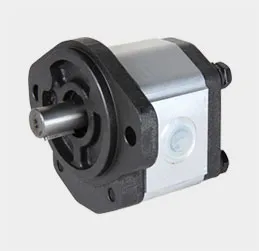Standards for Porosity in Die Casting Processes and Quality Control Techniques
Understanding Die Casting Porosity Standards
Die casting is a widely used manufacturing process that allows for the production of complex shapes with high dimensional accuracy and a smooth surface finish. However, one of the common challenges encountered in die casting is porosity, which refers to the presence of voids or air pockets within the casting material. This phenomenon can significantly affect the mechanical properties of casting, such as strength, fatigue resistance, and corrosion resistance. To ensure the quality of die-cast components, various standards for measuring and controlling porosity have been developed. This article will explore the concept of porosity in die casting, the associated standards, and the importance of maintaining these standards in manufacturing processes.
Understanding Porosity in Die Casting
Porosity in die casting can arise from several factors, including the design of the mold, the quality of the molten metal, and the environmental conditions during casting. The primary types of porosity include
1. Gas Porosity This occurs when gases are trapped within the molten metal during the casting process. The sources of these gases can include moisture in the metal, chemical reactions, and contamination from additives.
2. Shrinkage Porosity This form of porosity results from the shrinkage of metal as it cools and solidifies. When the metal solidifies, it can create voids if not enough metal flows into the mold to compensate for this shrinkage.
3. Inclusion Porosity This type of porosity arises from the inclusion of foreign materials, such as oxides or other particles, in the molten metal, which can lead to the entrapment of gas or voids.
Porosity can introduce weak points in the die-cast component, leading to failure under stress. As such, controlling porosity is vital for ensuring the reliability and performance of die-cast products.
Die Casting Porosity Standards
To manage and minimize the occurrence of porosity in die-cast parts, several industry standards have been established. These standards provide guidelines for manufacturers on acceptable levels of porosity and methods for measurement. Some notable standards include
die casting porosity standards

2. ISO 9001 While not specific to die casting, this quality management standard emphasizes the importance of process control, which includes monitoring porosity as a critical quality parameter.
3. MQI (Machining Quality Indicator) This is a specific guideline for die castings that provides metrics for assessing the quality of castings, including porosity levels as a determinant of overall quality.
4. AMS 2140 This aerospace standard details requirements for the evaluation of porosity in aluminum and other alloys used in critical applications, emphasizing rigorous testing methods.
Importance of Porosity Standards
The implementation of porosity standards is crucial for several reasons
- Product Reliability Maintaining low levels of porosity increases the mechanical integrity of die-cast products, leading to higher reliability in applications, especially in sectors such as aerospace and automotive, where failure can have catastrophic consequences.
- Cost Efficiency By adhering to porosity standards, manufacturers can reduce waste and rework associated with defective castings, ultimately improving profitability and operational efficiency.
- Customer Satisfaction Consistent quality in manufacturing builds trust with clients and end-users, resulting in repeat business and a solid reputation in the industry.
- Regulatory Compliance Many industries have regulatory requirements that encompass material quality, including porosity levels; adhering to established standards helps ensure compliance and reduces the risk of legal liabilities.
In conclusion, die casting porosity is a critical consideration in the manufacturing process that can significantly impact the quality and performance of the final product. Through established standards, manufacturers have the tools and guidelines necessary to measure, manage, and minimize porosity, leading to improved product reliability, reduced costs, and enhanced customer satisfaction. As the industry continues to evolve, adhering to these standards will remain a cornerstone of effective die casting practices.
-
Top Extras Casting Solutions Die Casting and Sand Casting Experts High-Quality Casting and Die Casting ServicesNewsJun.10,2025
-
Top SS Casting Manufacturer Aluminum Die Casting Manufacturer China Precision Die Casting Company SupplierNewsJun.10,2025
-
High-Quality Brass Casting Sand for Precision Sand Casting Brass at HomeNewsJun.10,2025
-
Affordable Aluminum Sand Casting Solutions Custom PartsNewsJun.09,2025
-
High-Quality China Sand Casting Services Cost-Effective & ReliableNewsJun.09,2025
-
Premium Hot Stamping Parts Durable Plastic Decor SolutionsNewsJun.09,2025















